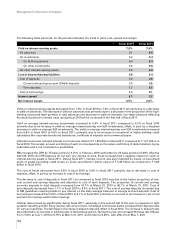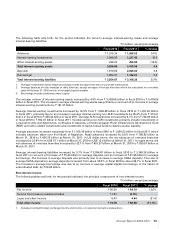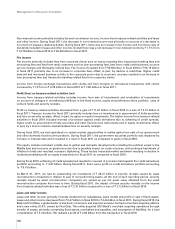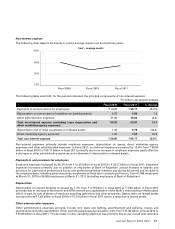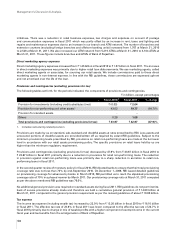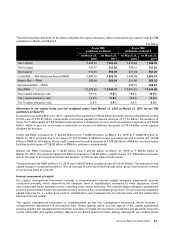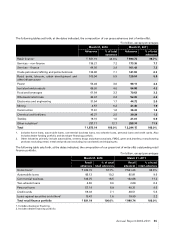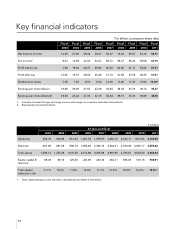ICICI Bank 2011 Annual Report Download - page 66
Download and view the complete annual report
Please find page 66 of the 2011 ICICI Bank annual report below. You can navigate through the pages in the report by either clicking on the pages listed below, or by using the keyword search tool below to find specific information within the annual report.
tests on our various portfolios and assess the impact on our capital ratios and the adequacy of our capital buffers
for current and future periods. We periodically assess and refine our stress tests in an effort to ensure that the stress
scenarios capture material risks as well as reflect possible extreme market moves that could arise as a result of market
conditions. Internal capital adequacy assessment process at the consolidated level integrates the business and capital
plans and the stress testing results of the group entities.
Based on the internal capital adequacy assessment process, we determine our capital needs and the optimum level of
capital by considering the following in an integrated manner:
•strategic focus, business plan and growth objectives;
•regulatory capital requirements as per RBI guidelines;
•assessment of material risks and impact of stress testing;
•perception of credit rating agencies, shareholders and investors;
•future strategy with regard to investments or divestments in subsidiaries; and
•evaluation of options to raise capital from domestic and overseas markets, as permitted by RBI from time to time.
We formulate our internal capital level targets based on the internal capital adequacy assessment process and
endeavour to maintain the capital adequacy level in accordance with the targeted levels at all times.
Basel III
In order to strengthen the resilience of the banking sector to potential future shocks, together with ensuring adequate
liquidity in the banking system, the Basel Committee on Banking Supervision (BCBS) issued the Basel III proposals
on December 17, 2009. Following a consultation phase on these proposals, the final set of Basel III rules were issued
on December 16, 2010. The Basel III rules on capital consist of measures on improving the quality, consistency and
transparency of capital, enhancing risk coverage, introducing a supplementary leverage ratio, reducing pro-cyclicality
and promoting countercyclical buffers, and addressing systemic risk and interconnectedness. The Basel III rules on
liquidity consist of a measure of short-term liquidity coverage ratio aimed at building liquidity buffers to meet stress
situations, and a measure of long-term net stable funding ratio aimed at promoting longer term structural funding.
Some of the Basel III measures will be phased-in between January 1, 2013 and January 1, 2019. BCBS has stipulated
a phased implementation of the Basel III framework between January 1, 2013 and January 1, 2019
Guidlines on Basel III framework for the Indian banking system are awaited from RBI. We continue to monitor
developments on the Basel III framework and believe that our current robust capital adequacy position, adequate
headroom currently available to raise hybrid/debt capital, demonstrated track record of access to domestic and
overseas markets for capital raising and adequate flexibility in our balance sheet structure and business model will
enable us to adapt to the Basel III framework along with any amendments by RBI, as and when they are implemented.
ASSET QUALITY AND COMPOSITION
Loan Concentration
We follow a policy of portfolio diversification and evaluate our total financing in a particular sector in light of our
forecasts of growth and profitability for that sector. Between 2003 and 2006, the banking system as a whole saw
significant expansion of retail credit, with retail loans contributing for a major part of overall systemic credit growth.
Accordingly, during these years, we increased our focus on retail finance. In view of high asset prices and the
increase in interest rates since the second half of fiscal 2008, we followed a conscious strategy of moderation of retail
disbursements, especially in the unsecured retail loans segment. Following this trend, our gross retail finance loans
and advances declined from 49.3% of our total gross loans and advances at year-end fiscal 2009 to 44.4% at year-end
fiscal 2010 and further to 39.7% at March 31, 2011.
Our Credit Risk Management Group monitors all major sectors of the economy and specifically tracks sectors in which
we have loans outstanding. We seek to respond to any economic weakness in an industrial segment by restricting new
exposures to that segment and any growth in an industrial segment by increasing new exposures to that segment,
resulting in active portfolio management.
Management’s Discussion & Analysis
64


